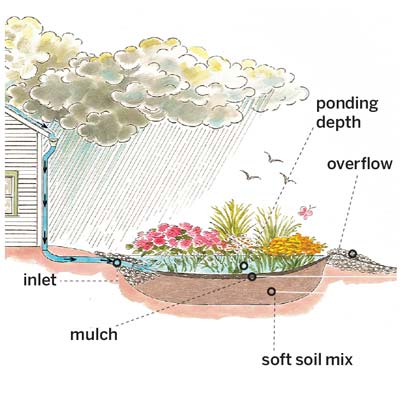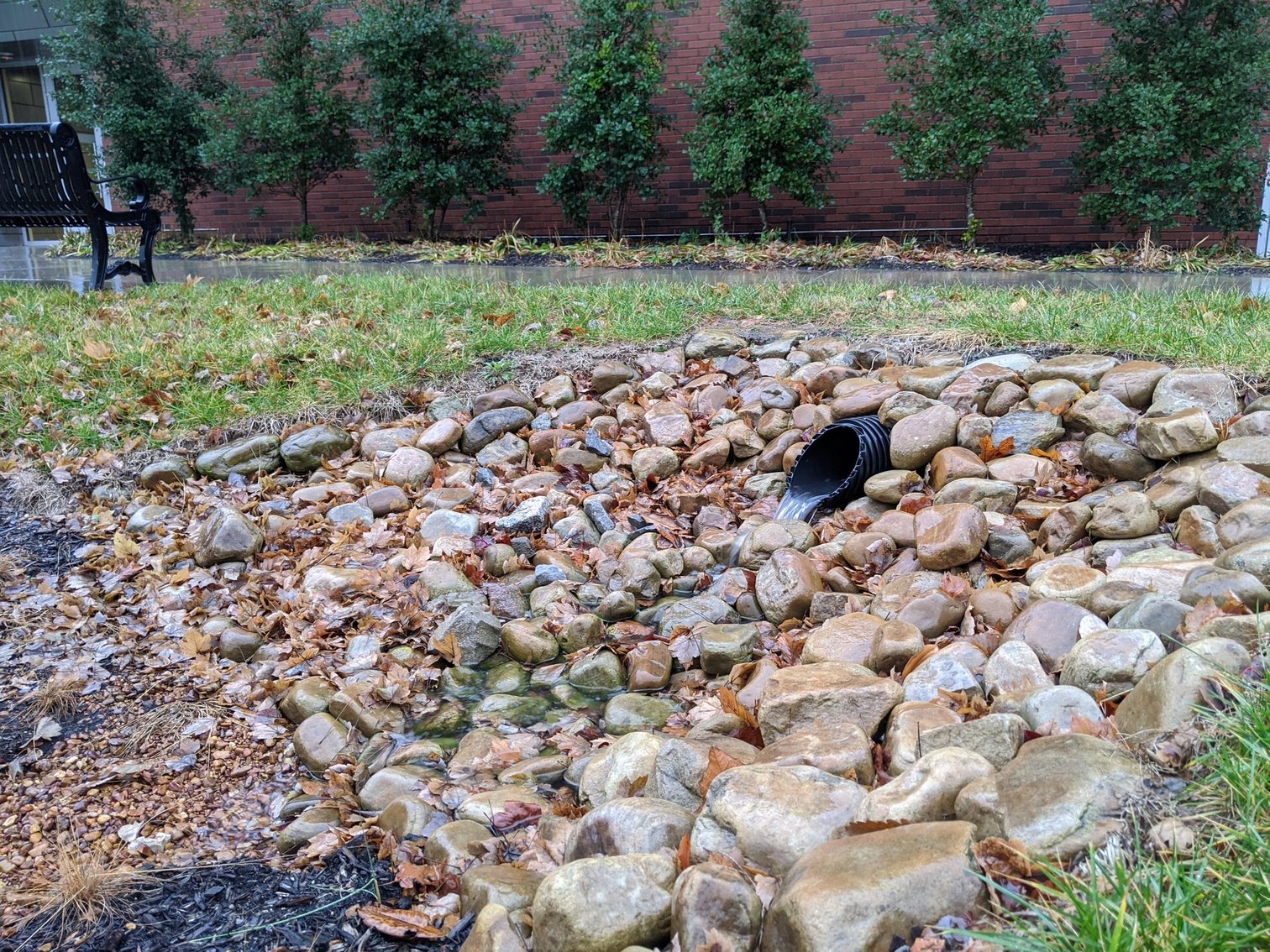 As Austin Peay’s campus grows, so does the amount of impervious surfaces. When it
rains, water get funneled into our storm drains and creates a burden on our city storm
water infrastructure. All the rain that falls on the Art and Design Building is funneled
through pipes into rain gardens.
As Austin Peay’s campus grows, so does the amount of impervious surfaces. When it
rains, water get funneled into our storm drains and creates a burden on our city storm
water infrastructure. All the rain that falls on the Art and Design Building is funneled
through pipes into rain gardens.
A rain garden is a garden of native shrubs, perennials, and flowers planted in a small depression, which is generally formed on a natural slope. It is designed to temporarily hold and soak in stormwater runoff that flows from roofs, driveways, patios or lawns. Rain gardens are effective in removing up to 90% of nutrients and chemicals and up to 80% of sediments from the rainwater runoff. Compared to a conventional lawn, rain gardens allow for 30% more water to soak into the ground.
Stormwater is runoff from rain events that flows across land. As stormwater crosses
urban landscapes it picks up pollutants such as pesticides, fertilizers, car oils,
pet wastes, and trash. These pollutants flow into our storm drains, which run directly
into our rivers, streams, and drinking water.

It is important to remember that anything dumped outside may end up in our waterways and drinking water. As citizens, we have a responsibility to protect our natural resources by properly disposing of potential pollutants.
Here are a few ways that you can prevent stormwater runoff pollution:
• Wash your car at a car wash instead of in your driveway
• Pick up after your pets
• Check your car for leaks
• Pick up trash, even if it’s not yours
• Use natural pest control methods